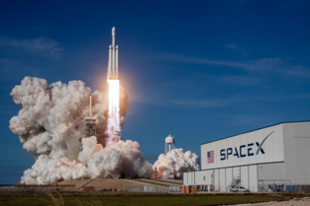SpaceX Starship Tries Again, Blows Up Again
A little less than two months ago, Elon Musk's SpaceX launched its new "SN8" Starship prototype on its first-ever high-altitude flight test. It was magnificent. SN8 flew 41,000 feet up, then fell 41,000 feet down, flipped to ignite its landing thrusters, and... exploded in a fireball.
Two months later, it was the second verse, the same as the first.
Flying a precise 10 kilometers into the air this time (just short of SN8's record), the latest unmanned iteration of Starship -- SN9 -- once again cut off its engines at its apex, turning horizontally (to increase air resistance and decrease speed) as it fell back to Earth. Flipping vertically one final time and igniting its engines just eight seconds before touchdown, the rocket appeared to swing wide of its mark, landing at a steep angle and exploding on impact.
Total time from start to finish: 6 minutes, 26 seconds.
Live feed of Starship SN9 flight test → https://t.co/Hs5C53qBxb https://t.co/ioM0D5J91I
— SpaceX (@SpaceX) February 2, 2021
Today's mission thus differed in a few respects from December's. It was shorter by 16 seconds. The rocket waited three seconds longer to ignite its landing thrusters. And it landed significantly farther off from a 90-degree angle than last time around.
Commenting on the mission, SpaceX principal integration engineer John Insprucker deadpanned, "We've just got to work on that landing a little bit." He insisted that his team "got a lot of good data" out of the mission.
SpaceX is already getting ready to put that data to work. SN9 may be dead (RIP), but SpaceX's next test vehicle, SN10, is already on its launchpad and ready to begin testing for the next attempt.

This article originally appeared in the MotleyFool.
The Motley Fool has a disclosure policy.





















